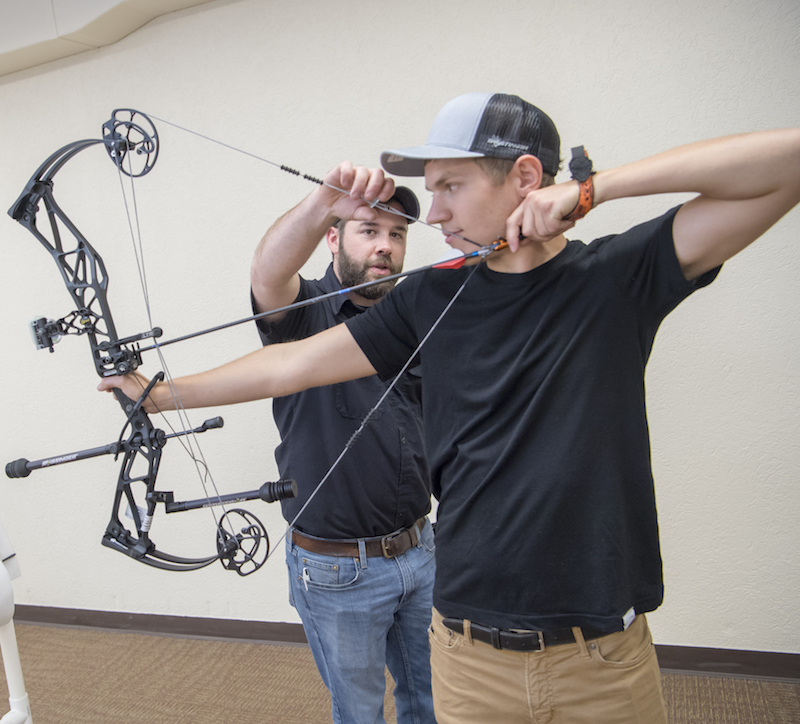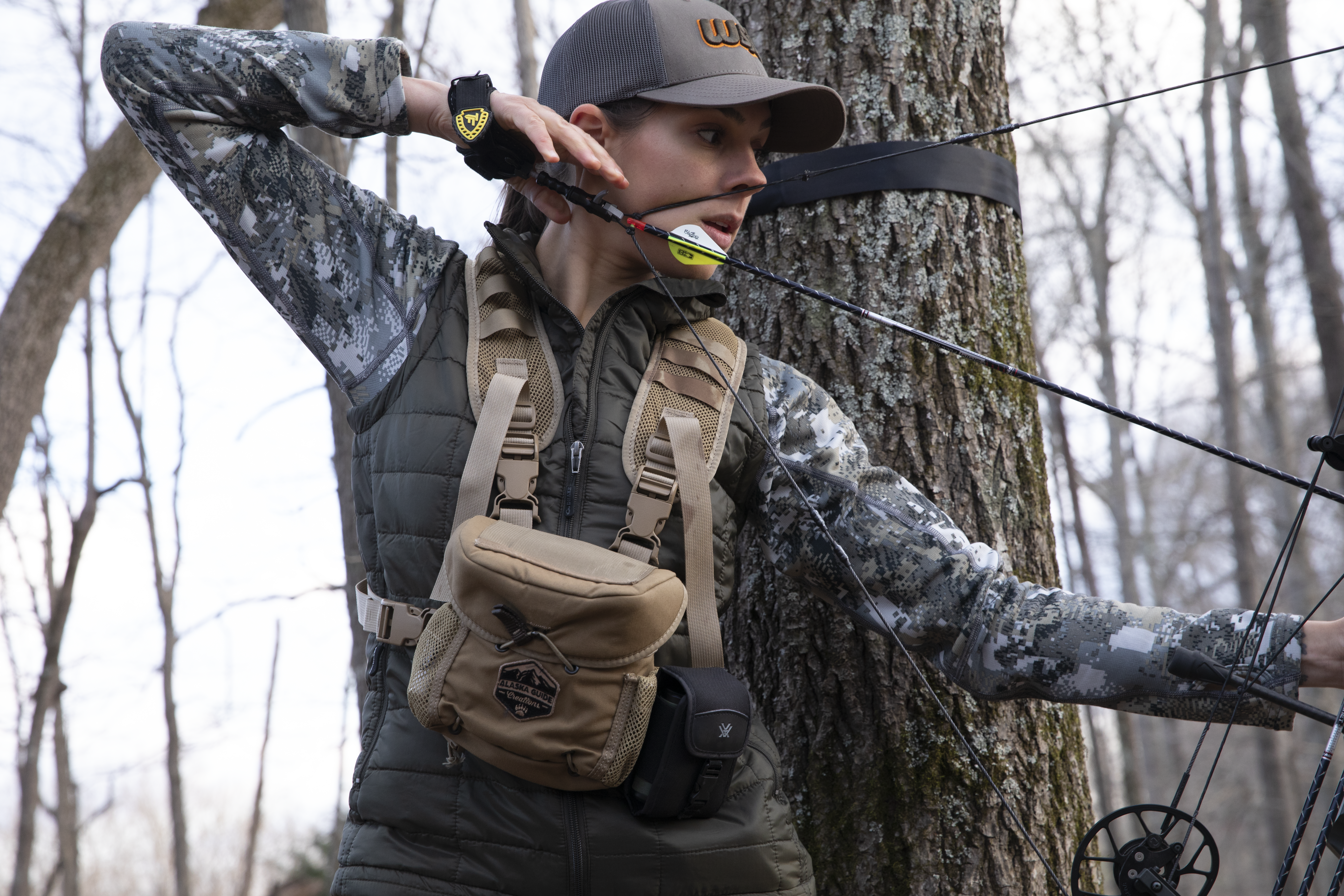Draw weight, or poundage, is a measurement of the force needed to draw a bow. You might hear someone say, “I shoot a 40-pound bow.” That means their bow’s draw weight is 40 pounds.
Every bow has a draw weight. Some compound bows can be adjusted over a 50-pound range, such as 15 to 65 pounds, while others offer a smaller range of poundage adjustment such as 10 pounds.. Every person has an ideal draw weight. Some archers easily pull 30 pounds, and others can pull over 70 pounds.
Determining your optimal draw weight is very important when deciding on the right bow for you. Randy Walk, President of Hoyt Archery said, “Selecting the right draw weight is very important when choosing a bow. The proper bow weight based on a bowhunter’s experience and physical ability will help them maximize the control of the draw cycle of that bow and more effectively execute consistent and accurate shots.”

You should be able to draw the bow back smoothly without arching. Photo Credit: ATA
Bowhunters should be able to point their bow at the target and draw the bowstring straight back smoothly and with little movement. If, when drawing a bow, you need to lean forward or backward, or raise your bow skyward to get the bow to full draw, your bow’s draw weight is most likely too heavy. Shooting draw weights heavier than your natural ability increases the risk of injury.
You can also test your draw weight by drawing your bow while seated, which is more difficult than drawing it while standing. If you can smoothly draw your bow while sitting, your bow is probably set at a manageable weight.
Once you find a weight you shoot comfortably and confidently, check your state wildlife agency’s hunting regulations on bowhunting draw weights. Most states (33 of 50) have minimum-draw weight requirements. Some have a 30-pound minimum, and others have set 35- or 40-pound minimums.
If your draw weight meets your state’s requirements, and you’re able to effectively draw and accurately shoot your bow based on the guidelines above, you’re set. If not, practice with your bow to increase your draw strength. These tips and exercises will help. As you gain muscle, you can increase your bow’s draw weight.
Seventeen wildlife agencies don’t set minimum draw weights. Does that mean you can hunt with a 20-pound bow? You can, but you probably shouldn’t if hunting most big-game animals. Walk commented, “bowhunters should shoot as much poundage as they can safely pull and accurately shoot to increase the probability of making ethical and lethal shots.”

There are other factors that go into an ethical shot. Photo Credit: ATA
Draw weight alone, however, won’t ensure fatal shots because lethality includes other variables. Bows with high draw weight better ensure your arrow and broadhead penetrate vital organs, but some lower draw weights can also harvest animals if the shot placement is accurate. Consider these factors when shooting low-poundage bows:
– Shot placement: To inflict kill shots, you must place your arrow into the animal’s vital organs. Even if you shoot a 70-pound bow, a shot to a deer’s lower leg won’t be lethal. A broadhead in the animal’s heart or lungs ensures quick, humane kills.
– Shot distance: The closer your shot, the faster and more powerful your arrow will be. Close shots are also easier to make because your target appears larger.
– Arrow weight: Heavier arrows penetrate animals better than light arrows because they carry more energy.
– Broadhead design: Fixed-blade broadheads penetrate well, so they’re an excellent choice when pursuing large game and when shooting light-poundage bows.
– Draw length: Draw length measures how far you draw the bow to your anchor point. Archers with long draw lengths transfer more energy to their arrows than someone shooting the same bow model with a short draw length. Experts found in archery pro shops can help you compensate for a low draw weight by helping you choose the right equipment. After that, make careful shooting decisions based on distance, arrow placement and of course, much practice.
Walk said a 30-pound draw weight can be effective for smaller game such as hogs, deer and turkeys but suggests re-evaluating your setup and circumstances when bowhunting bigger animals like elk, bears and moose.
If you need help setting or determining your draw weight, visit an archery pro shop. A bow technician can also help you adjust your draw weight.